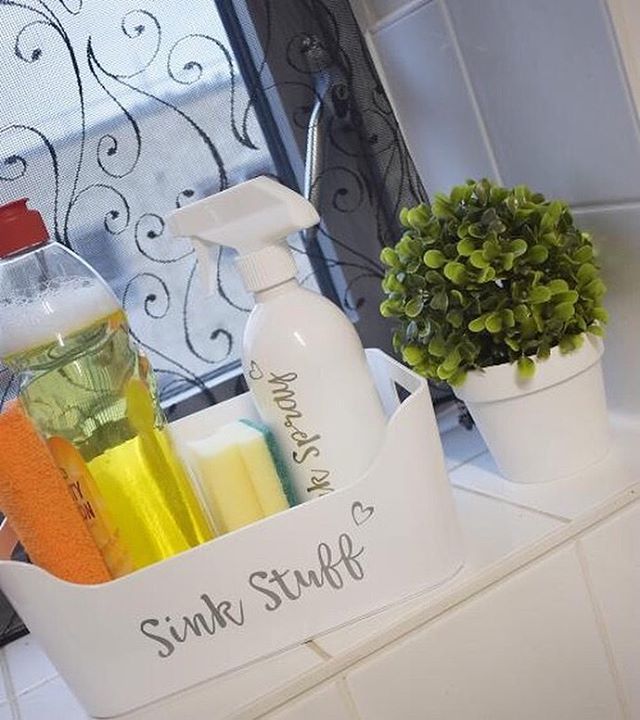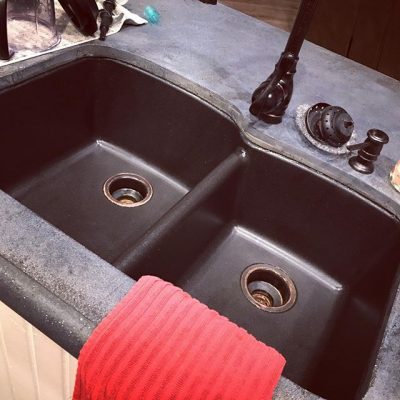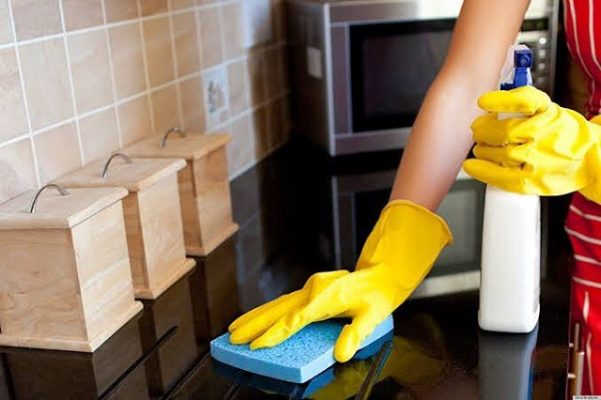Style
How To Clean Your Kitchen Sink Sprayer
A kitchen faucet may clean your dishes, fill cups with drinking water and be used for cooking, but it could certainly use some cleaning itself as well. Just ask yourself about the number of times you’ve had to look to the underside of your kitchen sink faucet. Do you clean that place often? Because you really should.
If left untouched, kitchen faucets can be a breeding ground for mildew, mold and lime buildup. And if you live someplace that has hard water, gunk may build up over time in the sprayer’s holes, eventually clogging them and ultimately slowing down the water stream. Then, later on, the hose will be gummed up with bits of debris, greatly affecting its ability to retract.
That’s why you need to clean it at least once every couple of weeks. And if you’ve never been in the habit of cleaning faucet, then we suggest you start now.
How to Clean Your Kitchen Sink Sprayer
Materials You’ll Be Needing
- Warm water
- White vinegar cut halfway with warm water
- Three microfiber cloths
- Two bowls
- Toothbrush (optional)
Instructions
- Prep the bowls: take one bowl and fill it with vinegar solution and the other with plain warm water.
- Pull your kitchen sprayer out: pull the kitchen sprayer all the way out until there’s no more pulling to be done. You can disconnect the hose from its base to dislodge it completely, provided you are handy. But if you think you won’t be able to manage this, then don’t do it.
- Clean the kitchen hose: take the first microfiber cloth, dip it into the vinegar solution and then gently rub it along the hose to get rid of any debris.
- Dip the second microfiber cloth: dip the second microfiber cloth into the plain water after the hose is cleaned.
- Wipe the hose: use the second cloth to wipe the hose down and then remove any of the remaining vinegar solutions.
- Get ready to clean the nozzle: if possible, remove the spray nozzle from the kitchen hose. And if you’re unable to do this, don’t worry, you can still clean it. Dip the first cloth back into the vinegar solution.
- Now clean the nozzle: use the first cloth to scrub the holes of the nozzle. Let the vinegar solution sit on the nozzle for a couple of minutes or add some extra power and then scrub it with an old toothbrush. If you find that the hose is still clogged or is covered with visible hard water spots, then it the sprayer sit in a bowl of vinegar solution for at least 30 minutes or leave it overnight. Then after that, use the water-dipped cloth to give one final wipe to your nozzle.
- Dry the hose: use the third cloth you have to dry the hose before you retract it back to its original position.
- Rinse it: rinse the sprayer with extremely hot water for a couple of minutes to get rid of any remaining debris or vinegar solution from the hose’s holes before you can use the sprayer to rinse good or fill a glass with water again.
How to Clean a Two-Piece Sprayer Head
It’s much easier to clean a two-piece sprayer head than a one-piece one as you have access to all sides of the aerator when you take it apart.
Here’s what you should do in order to clean it and use it again:
- Grab hold of two sections of the sprayer head: hold your non-dominant hand’s back section and the front section, near the aerator with your other hand.
- Twist the front aerator section to the left until you see it come loose from your hand.
- Now put both pieces down and put on protective rubber gloves
- Then hold the aerator with your non-dominant hand
- Take an old toothbrush or small crib brush and dip it into a cleaning solution for mineral deposits like CLR
- Scrub both sides of the aerator using the mineral deposit cleaner until it’s clean. Mineral deposits may appear whitish in color. But you’ll know that the aerator is cleaned when there is no more white crust left.
- Use water to rinse the aerator
- Then screw the aerator back onto the sprayer head.
 USD
USD CAD
CAD


